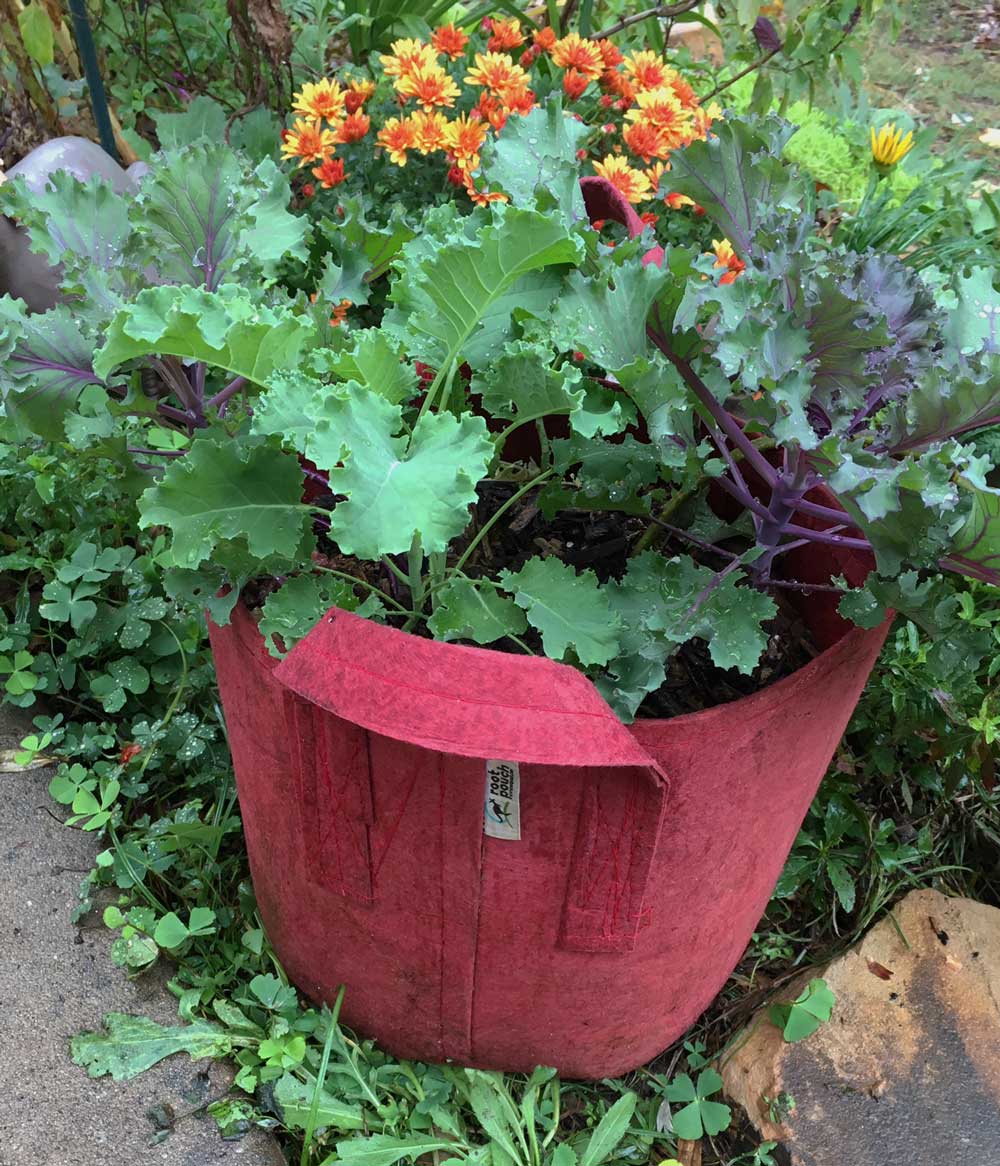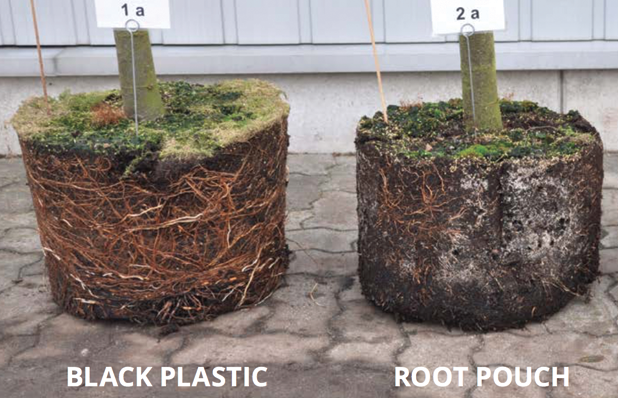Root pouch: a helpful new tool for patio and container gardening

Tyrant Farms' articles are created by real people with real experience. Our articles are free and supported by readers like you, which is why there are ads on our site. Please consider buying (or gifting) our books about raising ducks and raising geese. Also, when you buy through links on our site, we may earn an affiliate commission. Learn more
A root pouch costs far less than a ceramic or plastic pot, and produces plants with healthier root systems and higher yields. If you enjoy patio and container gardening, root pouches can significantly improve the health of your plants and growing results.
[divider top=”no” size=”2″]
Every now and then, we run into a new gardening tool or resource that makes things way easier or better. When that happens, we like to share it.
Most of our gardening is done in-ground, since we have a good bit of land and have been building our soil for almost a decade. However, we still enjoy growing in containers. For instance, we grow about a dozen varieties of citrus organically in pots, and we also have a back deck with pots that we keep full of annual fruits and veggies year round.

Container gardening can be challenging, especially when you’re new to it. You have to make sure to use high quality potting soil (like this) NOT gardening soil, otherwise the soil in the pot will quickly become a compacted brick. Since a plant is only limited to the nutrition that’s within the confines of the pot, maintaining balanced fertility can be a challenge.
Another problem with potted plants is they tend to get “root bound,” meaning the roots are literally choking each other trying to find new room to grow inside the container. In plastic and ceramic containers, the roots hit the hard perimeter, then start circling the perimeter of the container looking for an opening, eventually choking the plant. If not addressed, being root bound can severely stunt the container plant’s growth or even kill it.

Root Pouch: Not Your Momma’s Garden Pot
Well, we recently decided to try something called a “root pouch” after hearing rave reviews about them. Root pouches are a lot less expensive than ceramic or stylized plastic pots. They also don’t break if you drop them. (We’ve shattered more than our fair share of ceramic pots over the years.) They’re shaped like regular pots, but they’re made of a lightweight, breathable recycled fabric material instead of ceramic or plastic.
Here’s what’s so neat about them from a plant health standpoint:
- Better Aeration – They allow for a higher oxygen exchange meaning the plant can get oxygen to its root systems more easily – anaerobic conditions around the rhizosphere of your plant can cause roots to rot or encourage diseases/pathogens.
- Healthier, Air-Pruned Roots – When the plant’s roots reach the exterior wall of the root pouch, they don’t keep growing and circling the pot. Instead, the tiny root tips attach to the fabric and “air prune” themselves, which then triggers the plant to create new roots from the central root rather than sending roots to wrap around the inside of the pot. This simple difference translates into a dense, fibrous root ball and healthier, more productive plants.

Root Pouch Sizes
Root pouches come in a huge array of sizes. We’ve only tried the small Root Pouches so far, but we’re also going to try growing peanuts in a huge Root Pouch that’s shaped like a kiddy pool next summer, since growing peanuts in-ground has provided more peanuts for our voles than for us. The same is true with shallots, which our voles also LOVE.

Root pouches are usually ordered in bundles, so the price of a 3-5 gallon Root Pouch breaks down to about $1/pot. Not bad! Check out the options here. 3-5 gallon containers is great for virtually any annual garden plant you’d want to grow, from tomatoes to peppers to a fall kale patch (like the one in the above photo).
Nope, Root Pouch (the company) is not paying us to write a review or promote their products. They did provide a few product samples for us to try, but we wouldn’t be writing this article if we didn’t think root pouch was an excellent product and a helpful new tool for container gardeners.
If you’re growing in Root Pouches, we’d love for you to share your photos or reviews!
KIGI,








Hi Aaron. Thank you for the review.
I’m from Malaysia n just stumbled on your review. I’m thinking of getting some. Just wondering, are they weather resistant ?
We have heavy rainy seasons.
Thank you so much.
Hi Faiza! We live in the hot humid southeastern United States. Our root pouches usually last about 3-5 years left outdoors here with plants in them year round. If we emptied and took them out of the elements in the winter, they’d probably last longer – freezing seems to be what causes the most structural damage. Hope this info helps and best of luck!
Aaron and Susan, just checking in to see if you have an update on using the Root Pouches and if you think they are still a good idea.
Hi Dan! Yes, we continue to recommend, use, and love root pouches for specific applications. In fact, the ones we used in this article are still going strong and in use years later. We don’t use root pouches for things like our potted citrus trees that we have to move into a temperature protected environment on a regular basis since the fabric would make moving them more difficult than standard pots and cause root disturbance. However, for pretty much everything else, root pouches are superior to either plastic or ceramic pots when it comes to plant/root health.
Thanks for the update. I appreciate it.
Hi Aaron,
I just stumbled onto your blog after buying some root pouches and searching to see if there were any hints, tips, or tricks I should know before planting into them, but here in Australia the place I bought my root pouches from also recommends them for using inside a more rigid pot, like a nursery pot inside a decorative cache pot. I just wanted to share in case that could be useful for your citrus!
Cheers,
Alex
Thanks much, Alex! We’ve considered root pouches inside pots for our citrus, but haven’t tried it yet.